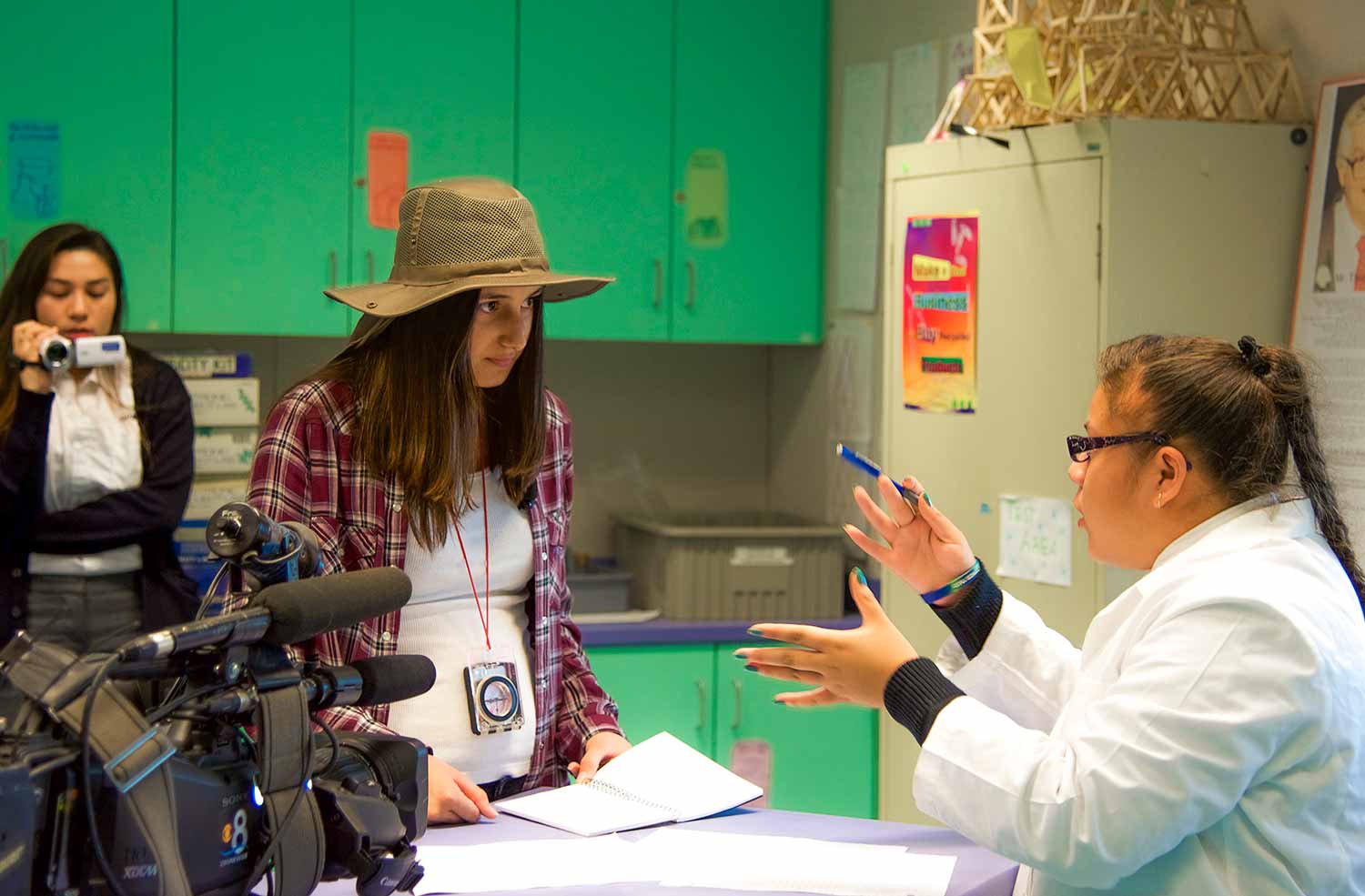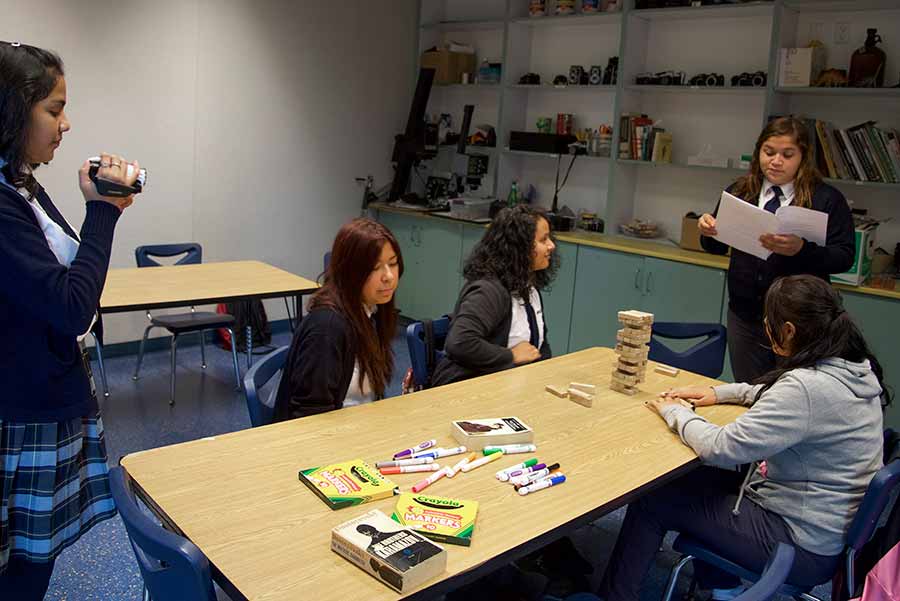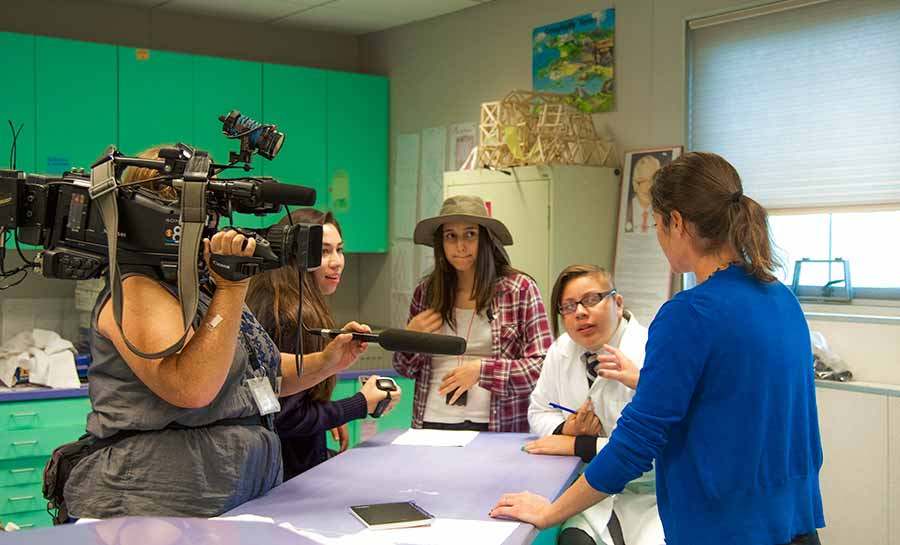
By:
- Jennifer Davies
Published Date
By:
- Jennifer Davies
Share This:

Lights, Camera, Action: Using Filmmaking to Teach Students the Science Behind Natural Disasters
Forget notebooks, pencils and erasers.
For a class at the Elementary Institute of Science, students need a large geological map, aluminum foil, a seismometer app, whipped cream, pie tins and a first-aid kit.
Oh, and fishing lines.
What are all those disparate items needed for? Why, to make a disaster movie based on real science, of course.

The class, fittingly called “How to Make a Disaster Movie Based on Real Science,” is a joint production of UC San Diego Extension, Scripps Institution of Oceanography and the Elementary Institute of Science, an organization in Southeast San Diego dedicated to providing STEM (science, technology, engineering and math) education to underserved students in the community.
Debi Kilb, a project scientist at Scripps who helps oversee the organization’s educational offerings at the Elementary Institute of Science and other locations, said the class is designed to teach students from Gompers Preparatory Academy about the science of disasters in a creative and hands-on way. They hope to offer it to offer it to other students in the future.
“This is about sparking students’ interest and then harnessing their imaginations so they can better understand how science works and impacts their daily lives,” Kilb said.
The five-day class, which ended Oct. 30, ran for two hours a day, with students spending the first hour learning about why earthquakes occur as well as common misconceptions about them and how best to prepare for one. The second hour was devoted to students translating that knowledge into creating a disaster movie.
Ed Abeyta, assistant dean of community engagement and director of pre-collegiate programs for Extension, said the class is one aspect of a larger partnership between the three organizations’ efforts to deliver on UC San Diego’s Strategic Plan to connect campus to the community and provide educational opportunities to underserved communities, especially in STEM and STEAM, which is short for science, technology, engineering, arts and math. While this first series of classes was dedicated to Gompers students, the plan is to offer it again in the future, opening it up to others.
“We know we have a skills gap when it comes to science, technology, engineering and math. We simply have more jobs in those areas than people to fill them. That means we need to start training students today for the jobs of tomorrow,” Abeyta said. “Classes like this one are a tangible way to encourage young people to pursue these interesting and important fields.”

Ida Rose Florez, executive director of the Elementary Institute of Science, said the partnership with UC San Diego Extension and Scripps is playing a vital role in fulfilling her organization’s mission of educating the next generation in STEM and STEAM.
"We're thrilled to partner with UC San Diego Extension and Scripps and offer students in our community this opportunity to have a great time learning cutting-edge STEM skills from UCSD scientists," Florez said.
To find out more about the classes offered through this partnership, click here, call (619) 263-2302 or email astevens@eisca.org.
Share This:
You May Also Like
Stay in the Know
Keep up with all the latest from UC San Diego. Subscribe to the newsletter today.


